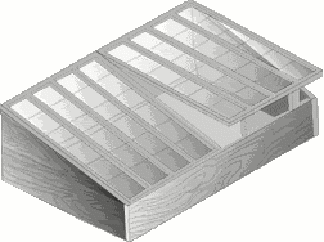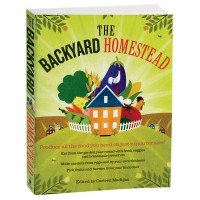

I don't know about you, but sometime between the first of the year and Valentine's Day, I start to get cabin fever, the 'jitters', the "I've just GOT to get my fingers in the dirt" thing.... I want something that tastes more 'homegrown' by now.
It's the PERFECT time to start planning your cold frame or hot bed to get a jump on spring!
Simple or fancy, a cold frame makes a great "halfway house" for starting out cold sensitive seedlings.

A cold frame traps heat by admitting sunlight in during the day through its covering and retaining heat radiated from the surrounding soil during the cold night hours. When closed, it also traps moisture inside the structure cutting down on your watering chores. Cold frames are useful for early planting of summer annuals and seeds, protecting tender plants in winter, forcing cuttings to root faster, starting perennials from seed in summer, and growing many kinds of plants you wouldn't normally be able to grow in your area.
The ideal location for a cold frame is a southern or southeastern exposure with a slight slope to ensure good drainage and maximum solar absorption. A sheltered spot with a wall or hedge to the north will provide protection against winter winds. Sinking the frame into the ground somewhat will also provide protection, using the earth for insulation.
In early spring, a cold frame is useful for hardening-off seedlings that were started indoors or in a greenhouse. This hardening-off period is important as seedlings can suffer serious setbacks if they are moved directly from the warmth and protection of the house to the garden. The cold frame provides a transition period for gradual adjustment to the outdoor weather. It is also possible to start cool-weather crops in the cold frame and either transplant them to the garden or grow them to maturity in the frame.
Spring and summer uses of the cold frame center on plant propagation. Young seedlings of hardy and half-hardy annuals can be started in a frame many weeks before they can be started in the open. The soil in a portion of the bed can be replaced with sand or peat moss or other medium suitable for rooting cuttings and for starting sweet potato slips.
Fall is also a good time for sowing some cool-weather crops in frames. If provided with adequate moisture and fertilization, most cool-season crops will continue to grow through early winter in the protected environment of the cold frame. Depending on the harshness of the winter and whether or not additional heating is used, your frame may continue to provide fresh greens, herbs, and root crops throughout the cold winter months.
![]() Insulation may be necessary when a sudden cold snap is expected. A simple method is to throw burlap sacks filled with leaves over the sash on the frame at night to protect against freezing, or bales of straw or hay may be stacked against the frame. Heating cables and mats can also be used to help keep cold frame temperatures in check.
Insulation may be necessary when a sudden cold snap is expected. A simple method is to throw burlap sacks filled with leaves over the sash on the frame at night to protect against freezing, or bales of straw or hay may be stacked against the frame. Heating cables and mats can also be used to help keep cold frame temperatures in check.
![]() Ventilation is most critical in the late winter, early spring, and early fall on clear, sunny days when temperatures rise above 45°F. The sash should be raised partially to prevent the buildup of extreme temperatures inside the frame. Lower or replace the sash each day early enough to conserve some heat for the evening.
Ventilation is most critical in the late winter, early spring, and early fall on clear, sunny days when temperatures rise above 45°F. The sash should be raised partially to prevent the buildup of extreme temperatures inside the frame. Lower or replace the sash each day early enough to conserve some heat for the evening.
![]() Shading a cold frame will prevent damage to plants from extreme heat and intensive sunlight in the summer. Commonly used coverings include lath, old bamboo window blinds, and knitted shade covers.
Shading a cold frame will prevent damage to plants from extreme heat and intensive sunlight in the summer. Commonly used coverings include lath, old bamboo window blinds, and knitted shade covers.


 The food industry's digusting secrets exposed. How to protect yourself.
Click Here!
The food industry's digusting secrets exposed. How to protect yourself.
Click Here!

